Minnesotans are fortunate to experience a variety of over 200 bird species throughout the year. Many of these birds brave the cold winter months in Minnesota to enjoy the abundance of food spring later brings through the state’s diverse species of trees. Below, you’ll find 10 common bird species that spend their winters in the Gopher State.
1. American Goldfinch
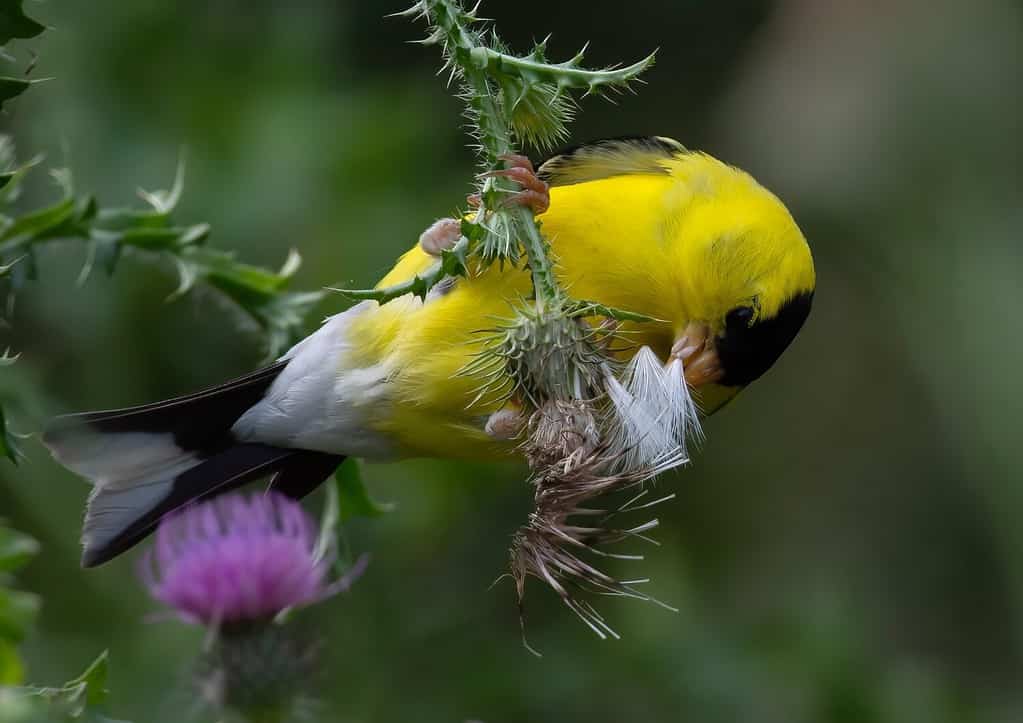
This goldfinch species is a late nester, waiting until their preferred plants produce seeds for their nests.
©gary powell/Shutterstock.com
The American goldfinch (Spinus tristis) is present all year long in the southern half of Minnesota. They are common birds to find at feeders and tend to prefer seeds to help sustain themselves through the cold winter months. You might not recognize this brilliantly gold bird twice yearly when they molt. Otherwise, it’s hard to miss the bright yellow feathers this bird boasts.
2. Pileated Woodpecker

The pileated woodpecker is a sizable bird, reaching up to 20 inches long.
©MasterShopArt/Shutterstock.com
Pileated woodpeckers (Dryocopus pileatus) live in most areas of Minnesota throughout the year and are present in some areas throughout Canada. You can differentiate this species of woodpecker from the eight others that live in the state by its large size, bright red head, and black and white stripes down the face. They mainly feed on insects or other creatures buried within rotting wood.
3. Red-Bellied Woodpecker
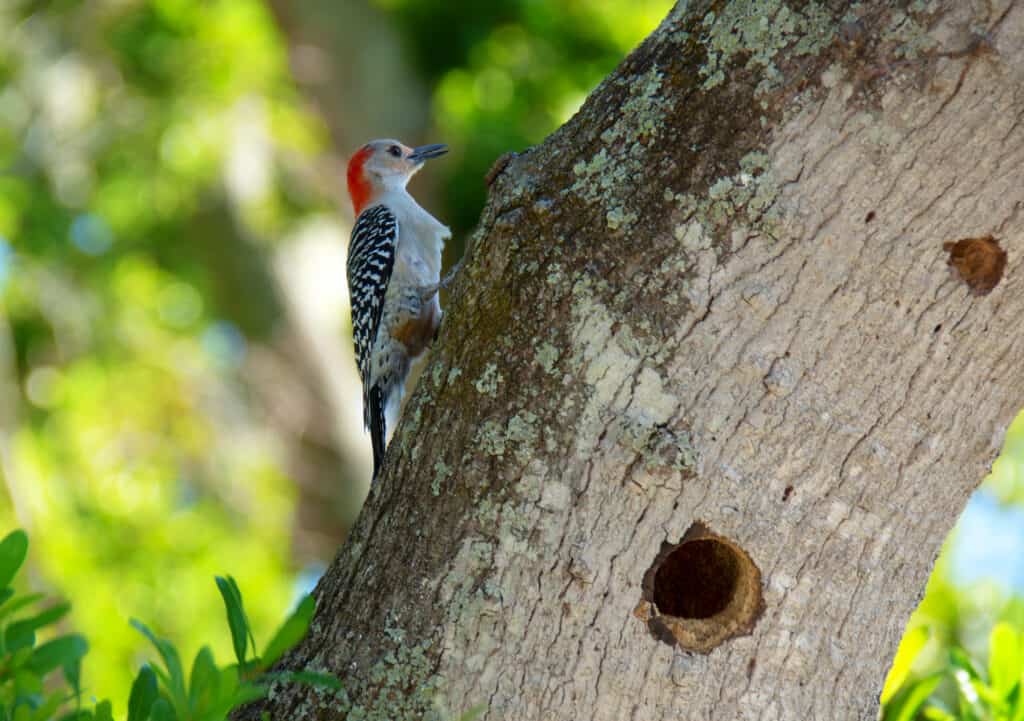
Red-bellied woodpeckers are half the size of the pileated woodpecker.
©Michael O’Keene/Shutterstock.com
The red-bellied woodpecker lives in the southern half of the state. These woodpeckers (Melanerpes carolinus) might not be named, as their bright red head and neck are more visible than the red on their bellies. Interestingly, and unlike many other birds, the males and females of this species look very similar.
4. House Finch
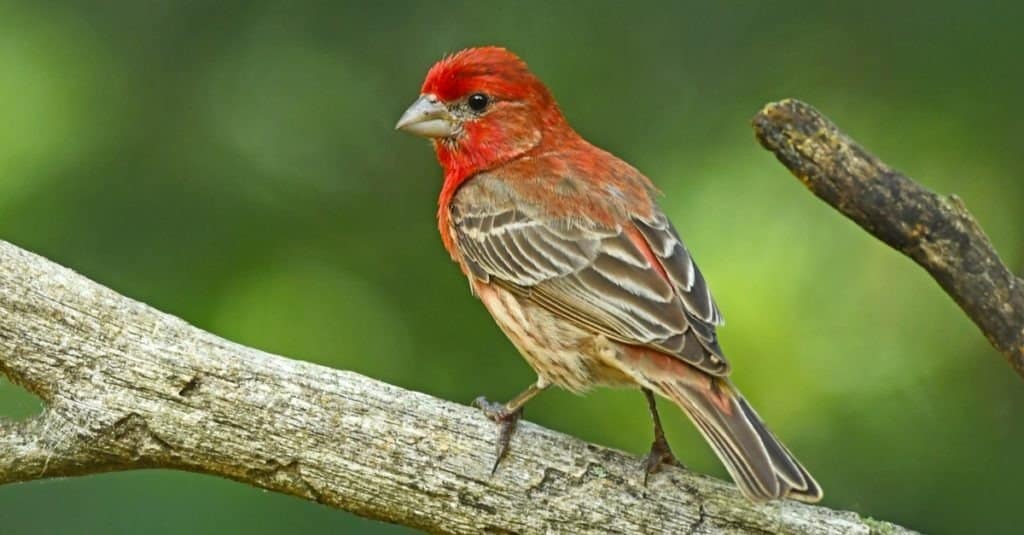
House finches exist in most states besides a strip between North Dakota and eastern Texas.
©Brian A Wolf/Shutterstock.com
While house finches (Haemorhous mexicanus) live mainly in the western and eastern areas of the U.S., you can find this adorable finch species in the southern region of Minnesota in the winter months. This is a bird you’ll surely notice due to their loud songs. Additionally, house finches tend to congregate in groups, making their blaring sounds even more amplified.
5. Northern Cardinal

This species of bird is one of the most recognizable birds around.
©Thomas Torget/Shutterstock.com
Despite their name, northern cardinals (Cardinalis cardinalis) are more common in the eastern and midwestern parts of the U.S. In Minnesota, you can find this bright red bird and the less-vivid, brown-colored females in most areas aside from the northern part of the state. The males remain bright red all year, so you can easily spot these winter birds amidst the snowy landscape of Minnesota.
6. Bluejay
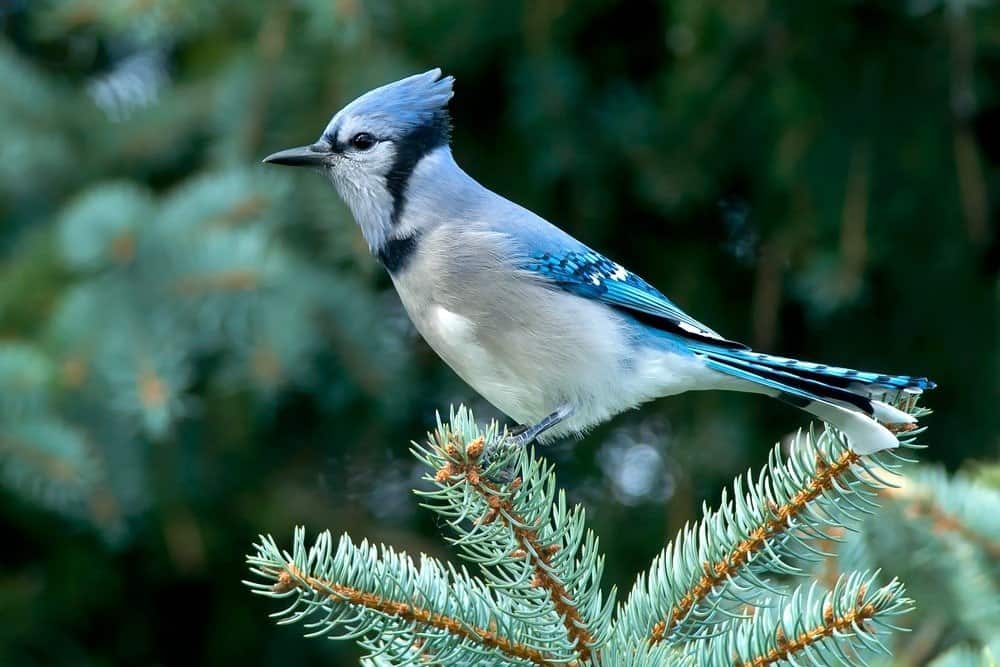
Blue jays are incredibly social birds but won’t hesitate to steal from other species’ nests.
©Paul Reeves Photography/Shutterstock.com
Gregarious and family-oriented birds, blue jays (Cyanocitta cristata) are members of the crow family, which explains their intelligence and social ability. When they molt in the late summer months, they lose the feathers around their head and neck. Although this lack of feathers may be a jarring sight, it’s a yearly event for this bird and many others. However, in the winter, you can expect blue jays to have their bright, signature plumage about them, making them easy to spot.
7. Dark-Eyed Junco

The dark-eyed junco is in all of Canada for the breeding season and the U.S. for the rest of the year.
©JPL Designs/Shutterstock.com
Dark-eyed juncos (Junco hyemalis) are present in the northeastern part of Minnesota all year and the remaining portions of the state during non-breeding months. They’re ground-foraging and ground-nesting birds. So, you can expect to find them along the forest floor or in your yard if you have cracked corn, millet, or sunflower seeds out.
8. Black-Capped Chickadee

Black-capped chickadees
can remember thousands of different areas
where they have stored food.
©Steve Byland/Shutterstock.com
The black-capped chickadee (Poecile atricapillus) is a bird that dwells mainly in the northern states of America and Canada. In Minnesota, their range is state-wide all year long. You might recognize this bird very quickly because they’re common around bird feeders and forests. During the Minnesotan winters, you can expect this bird to spend most of its time in its nest within the cavity of a tree. You can attract a mating pair by setting up a nesting box in your yard before wintertime.
9. White-Breasted Nuthatch

Finding the white-breasted nuthatch is easiest when looking in deciduous trees instead of coniferous ones.
©J. A. Mikulich/Shutterstock.com
White-breasted nuthatches (Sitta carolinensis) are one of the more common birds in North America. In the winters of Minnesota, you can find these birds state-wide. These tiny birds are only about 5 inches long at most. They also have a peculiar habit of traversing along tree trunks or other vertical surfaces sideways or upside-down.
10. Red-Breasted Nuthatch
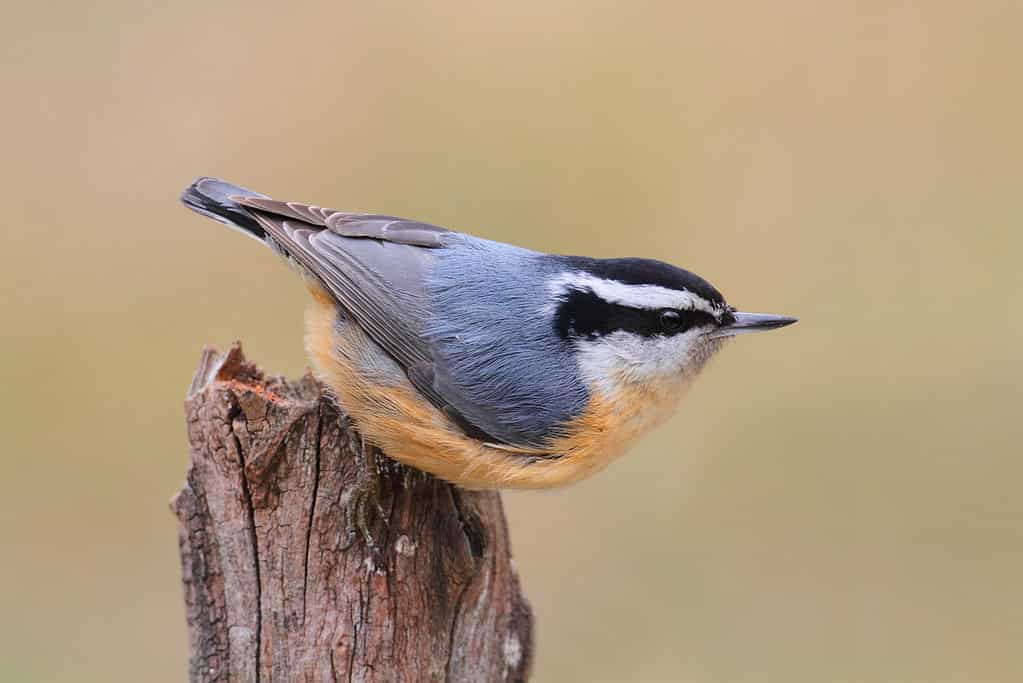
Red-breasted nuthatches have a black stripe along the side of their face and a copper belly and chest.
©iStock.com/SteveByland
Like the white-breasted nuthatch, the red-breasted nuthatch (Sitta canadensis) is a very common Minnesota winter bird. However, it is only present year-round in the northeastern part of the state. In the rest of the state, they’re only present in non-breeding months. In contrast to the white-breasted species, you’re more likely to find red-breasted nuthatches in coniferous trees.
The photo featured at the top of this post is © Jeff Caverly/Shutterstock.com
Thank you for reading! Have some feedback for us? Contact the AZ Animals editorial team.







